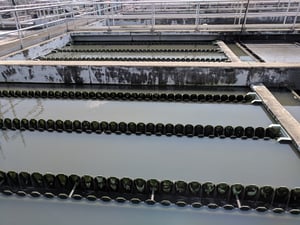While wastewater has long been considered just that—waste, new developments show it has potential as a resource as well. Applications range from use as an efficient water and energy source to a means of carrying nutrients essential to the survival of plants.
However, one of the processes to utilize these elements, known as “water mining,” has attracted divided opinions. Recycling limited elements, such as phosphorus and nitrogen, can be viewed as environmentally friendly, but there are potential risks too, including water pollution.
The use of recycled wastewater for landscape and crop irrigation, human consumption, and as an energy resource is not new, but historically only very small portions of wastewater have been used for these purposes. On average, each person in the United States uses roughly 80 to 100 gallons of water per day, with much of that coming from showers, sinks, toilets and washing machines.
 In many cases, the energy required to treat the wastewater has been too costly and inefficient for widespread use, according to a study published in Environmental Science & Technology.
In many cases, the energy required to treat the wastewater has been too costly and inefficient for widespread use, according to a study published in Environmental Science & Technology.
While recovering resources from wastewater is no small feat, researchers and entrepreneurs are working to simplify the process. These include innovative toilets that work to separate waste from materials that may be used as plant fertilizer, according to The Conversation.
Technology to recover struvite, rock-like magnesium ammonium phosphate crystals which can naturally form during the treatment process of wastewater, is also on the rise globally. Struvite often collects in tanks and pipes and can cause severe damage if ignored. Companies like France-based Veolia are already working on innovative practices to control the formation of struvite deposits and instead convert it into usable plant fertilizers and animal feed.
Phosphorous, which is essential to helping plants grow and survive harsh winter temperatures, can also be found in wastewater. Several companies have started using the extracted phosphorous and converting it into slow-release fertilizers. Adding the nutrient to soil can promote root growth and durability.
More can be mined from water than just environmental resources. Wastewater contains millions of dollars worth of metals that are often toxic to aquatic life, according to a study in Environmental Science & Technology. Tiny particles of these metals are often found in cosmetic products, sunscreens and paints and are flushed down the toilet or washed down the drain.
While humans have mined these natural resources for thousands of years, most have avoided searching in less-conventional places like sewage sludge. As with mining phosphorus, struvite and other materials, finding a more cost-effective and less environmentally-disruptive way to make use of these resources through water mining is still very much in the works, but researchers believe it could be a viable way to protect some of earth’s most valuable resources.
Image courtesy of Montgomery County, Maryland via Flickr CC BY-SA 2.0
